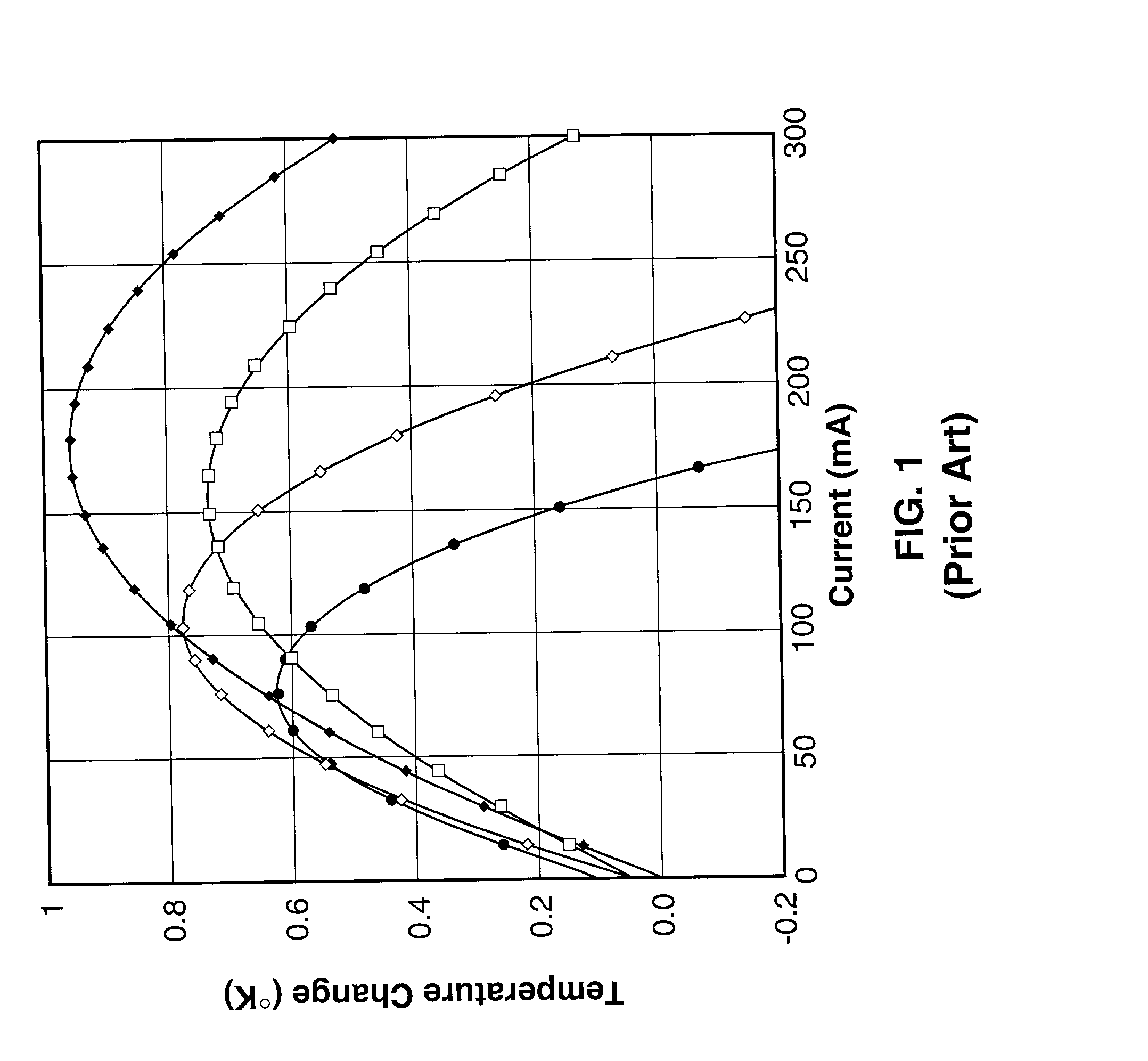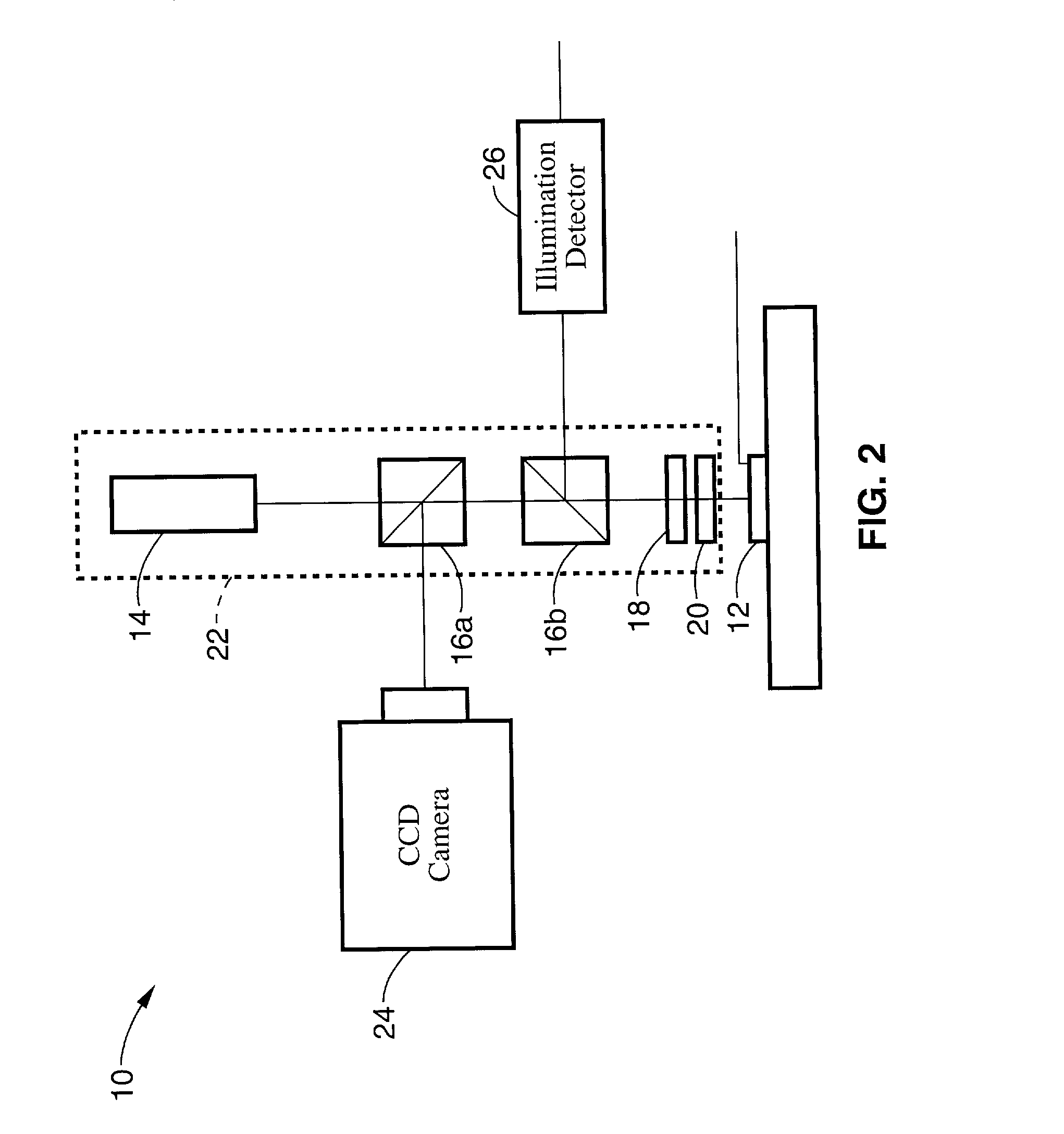Submicron thermal imaging method and enhanced resolution (super-resolved) ac-coupled imaging for thermal inspection of integrated circuits
a thermal inspection and integrated circuit technology, applied in the field of noncontact thermal registration methods, can solve the problems of inability to accurately and accurately measure the temperature of the integrated circuit, the required sophistication of the experimental setup, and the lack of accuracy, etc., to achieve simple and inexpensive temperature measurements and high spatial resolution
- Summary
- Abstract
- Description
- Claims
- Application Information
AI Technical Summary
Benefits of technology
Problems solved by technology
Method used
Image
Examples
Embodiment Construction
[0053] For illustrative purposes the present invention is embodied in the apparatus and methods described herein with reference to FIG. 1 through FIG. 15. It will be appreciated that the apparatus may vary as to configuration and as to details of the parts, and that the method may vary as to the specific steps and sequence, without departing from the basic concepts as disclosed herein.
[0054] 1. Introduction.
[0055] The thermoreflectance method of the present invention relies on the fact that the reflection of a surface is dependent on its temperature. Thermoreflectance refers to excitation from an external source, wherein a relative change of reflectance is measured. Previous use of thermoreflectance as a measure of thermal excitation required that the surface be subject to a high temperature change, such as within the metal traces. Typically the previous thermoreflectance methods were capable of providing measurements of temperature change on the order of 10 degrees or more, and wer...
PUM
 Login to View More
Login to View More Abstract
Description
Claims
Application Information
 Login to View More
Login to View More - R&D
- Intellectual Property
- Life Sciences
- Materials
- Tech Scout
- Unparalleled Data Quality
- Higher Quality Content
- 60% Fewer Hallucinations
Browse by: Latest US Patents, China's latest patents, Technical Efficacy Thesaurus, Application Domain, Technology Topic, Popular Technical Reports.
© 2025 PatSnap. All rights reserved.Legal|Privacy policy|Modern Slavery Act Transparency Statement|Sitemap|About US| Contact US: help@patsnap.com



